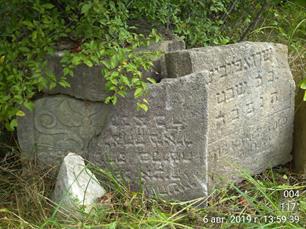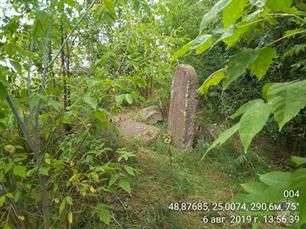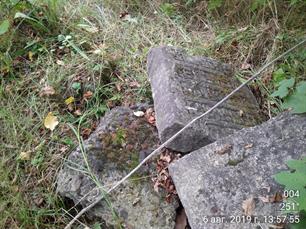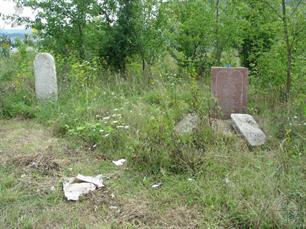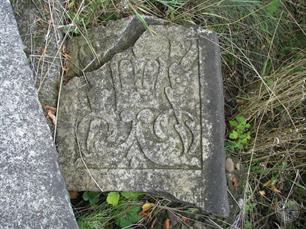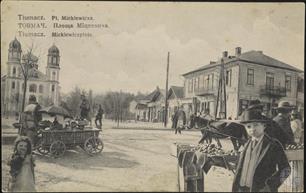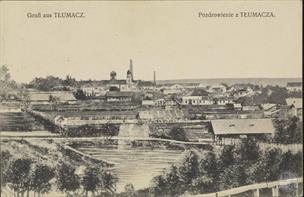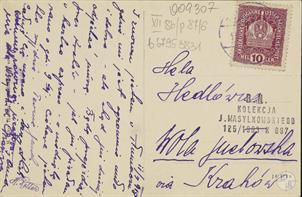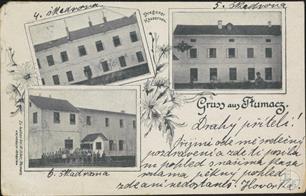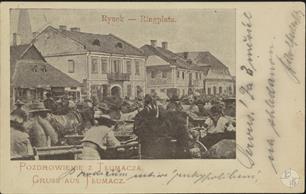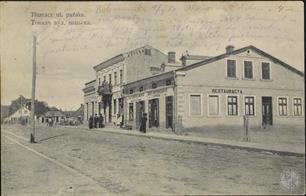Tlumach
Sources:
- Pinkas Hakehillot Polin: Encyclopedia of Jewish Communities, Poland, Volume II, published by Yad Vashem, Jerusalem.
- Jewish encyclopedia of Brockhaus & Efron
- Virtual Shtetl. Tlumach
- Encyclopedia of Jewish Life Before and During the Holocaust, vol. 3, Sh. Spector, G. Wigoder (eds.), New York, 2001
- Холокост на территории СССР: Энциклопедия / Гл. ред. И. А. Альтман. - М.: Российская политическая энциклопедия (РОССПЭН): Научно-просветительный Центр «Холокост», 2009
Photo:
- European Jewish Cemeteries Initiative. Published by Center for Jewish art
- Biblioteka Narodowa Polona. Tlumach
- Pinkas Hakehillot Polin: Encyclopedia of Jewish Communities, Poland, Volume II, published by Yad Vashem, Jerusalem.
- Jewish encyclopedia of Brockhaus & Efron
- Virtual Shtetl. Tlumach
- Encyclopedia of Jewish Life Before and During the Holocaust, vol. 3, Sh. Spector, G. Wigoder (eds.), New York, 2001
- Холокост на территории СССР: Энциклопедия / Гл. ред. И. А. Альтман. - М.: Российская политическая энциклопедия (РОССПЭН): Научно-просветительный Центр «Холокост», 2009
Photo:
- European Jewish Cemeteries Initiative. Published by Center for Jewish art
- Biblioteka Narodowa Polona. Tlumach
Ivano-Frankivsk district, Ivano-Frankivsk region
Tlumach is a city in the Ivano-Frankivsk region, in the era of the Commonwealth, which was part of the Galician land.
In 1765, there were 372 Jews (together with the surrounding villages - 520 Jews).
In 1880 - 1795 Jews (38.5% of the total population).
In 1900 - 2097 Jews (38.5%),
In 1939 - 2350 Jews (40%).
The first reference to Jews in Tlumach dates back to the 16th century. This very early community was destroyed during the wars of the 17th century. A new settlement appeared in the 18th century.
The Jewish presence in the town increased under the Austrian partition. Despite the very high taxes, Jews managed to achieve a dominant position in trade and craft.
Construction of a branch railway line, running from the main Stanisławуw-Tarnopol line, greatly contributed to an increased development of the local economy. Jews began purchasing local agricultural products and shipped them to the main towns of Galicia.
Other sources of their income were markets and craft – at least 200 young women were occupied with cottage industries such as knitting and embroidery.
World War I turned out to be a very difficult time for the Jews. The town was partly destroyed due to battles between the Austrians and the Russians. Particularly damaging were the raids by Russian Cossacks, who first plundered and then destroyed the ravaged households on a massive scale.
The Jewish community in Tlumach also grew during the interwar period, despite constantly high emigration rate. Due to the growing Polish and Ukrainian competition, business relations were not favourable for the Jews at that time. They were leaving the town also due to the Zionists groups' activity, which dominated the local political scene.
In 1939, 2,350 Jews lived in Tlumach, constituting 40% of the total number of residents.
In 1765, there were 372 Jews (together with the surrounding villages - 520 Jews).
In 1880 - 1795 Jews (38.5% of the total population).
In 1900 - 2097 Jews (38.5%),
In 1939 - 2350 Jews (40%).
The first reference to Jews in Tlumach dates back to the 16th century. This very early community was destroyed during the wars of the 17th century. A new settlement appeared in the 18th century.
The Jewish presence in the town increased under the Austrian partition. Despite the very high taxes, Jews managed to achieve a dominant position in trade and craft.
Construction of a branch railway line, running from the main Stanisławуw-Tarnopol line, greatly contributed to an increased development of the local economy. Jews began purchasing local agricultural products and shipped them to the main towns of Galicia.
Other sources of their income were markets and craft – at least 200 young women were occupied with cottage industries such as knitting and embroidery.
World War I turned out to be a very difficult time for the Jews. The town was partly destroyed due to battles between the Austrians and the Russians. Particularly damaging were the raids by Russian Cossacks, who first plundered and then destroyed the ravaged households on a massive scale.
The Jewish community in Tlumach also grew during the interwar period, despite constantly high emigration rate. Due to the growing Polish and Ukrainian competition, business relations were not favourable for the Jews at that time. They were leaving the town also due to the Zionists groups' activity, which dominated the local political scene.
In 1939, 2,350 Jews lived in Tlumach, constituting 40% of the total number of residents.
In September 1939, Tlumach came under Soviet occupation. As a result of an influx of refugees, the number of Jews grew to approximately 2,800 inl 1941.
Following the outbreak of the Soviet-German war, Tlumach was invaded by Hungarian forces on 7th July 1941. The Hungarian occupation lasted until September.
The Hungarians ordered the Jews to form a Judenrat (Jewish council) and implemented the obligation for Jews to wear bands bearing the Star of David. They also resettled a group of Hungarian Jews to Tlumach. On the other hand, the Hungarian authorities thwarted a pogrom attempted by Ukrainian nationalists.
In September 1941, German civil occupation authorities took over control in the town. German criminal police and gendarmerie posts, as well as the headquarters of the auxiliary Ukrainian police, were located in the city.
Under German occupation, the situation of Jews immediately deteriorated - they were directed to forced labour and most of their property was confiscated. The security police unit from Stanislaw led anti-Jewish operations.
Between the 5th and 6th of April 1942, approximately 1,000 Jews were resettled from Tlumach to Stanislaw. Then resettlement of Jews from nearby villages to Tlumach followed. Because of that, the number of Jews in the town grew to approximately 3,500.
In May 1942, 160 Jews were shot (according to other sources 198), and in June – another 78 individuals.
Another massive execution took place on the Jewish cemetery on 4th of June 1942. The officials who came from Stanisław and local German police officers shot 497 Jews, 15 Poles and 4 Ukrainians.
The next mass executions at this place followed in September (83 individuals) and November (58 individuals) 1942
The remaining Jews were confined in a ghetto. Harsh conditions, famine and diseases led to the death of another 280 people.
On the 27th November 1942, the ghetto was liquidated. Approximately 2,000 Jews were transported to the Nazi German death camp in Belzec.
Following the outbreak of the Soviet-German war, Tlumach was invaded by Hungarian forces on 7th July 1941. The Hungarian occupation lasted until September.
The Hungarians ordered the Jews to form a Judenrat (Jewish council) and implemented the obligation for Jews to wear bands bearing the Star of David. They also resettled a group of Hungarian Jews to Tlumach. On the other hand, the Hungarian authorities thwarted a pogrom attempted by Ukrainian nationalists.
In September 1941, German civil occupation authorities took over control in the town. German criminal police and gendarmerie posts, as well as the headquarters of the auxiliary Ukrainian police, were located in the city.
Under German occupation, the situation of Jews immediately deteriorated - they were directed to forced labour and most of their property was confiscated. The security police unit from Stanislaw led anti-Jewish operations.
Between the 5th and 6th of April 1942, approximately 1,000 Jews were resettled from Tlumach to Stanislaw. Then resettlement of Jews from nearby villages to Tlumach followed. Because of that, the number of Jews in the town grew to approximately 3,500.
In May 1942, 160 Jews were shot (according to other sources 198), and in June – another 78 individuals.
Another massive execution took place on the Jewish cemetery on 4th of June 1942. The officials who came from Stanisław and local German police officers shot 497 Jews, 15 Poles and 4 Ukrainians.
The next mass executions at this place followed in September (83 individuals) and November (58 individuals) 1942
The remaining Jews were confined in a ghetto. Harsh conditions, famine and diseases led to the death of another 280 people.
On the 27th November 1942, the ghetto was liquidated. Approximately 2,000 Jews were transported to the Nazi German death camp in Belzec.

- Home
- Shtetls
- Vinnytsia region
- Volyn region
- Dnipro region
- Donetsk region
- Zhytomyr region
- Zakarpattia region
- Zaporizhzhia region
- Ivano-Frankivsk region
- Kyiv region
- Kropyvnytskyi region
- Luhansk region
- Lviv region
- Mykolayiv region
- Odessa region
- Poltava region
- Rivne region
- Sumy region
- Ternopil region
- Kharkiv region
- Kherson region
- Khmelnytskyi region
- Chernihiv region
- Chernivtsi region
- Cherkasy region
- Crimea
- Synagogues
- Cemeteries
- Objects & guides
- Old photos
- History
- Contact
Jewish towns of Ukraine
Jewish towns of Ukraine
My shtetl
My shtetl
Donate
